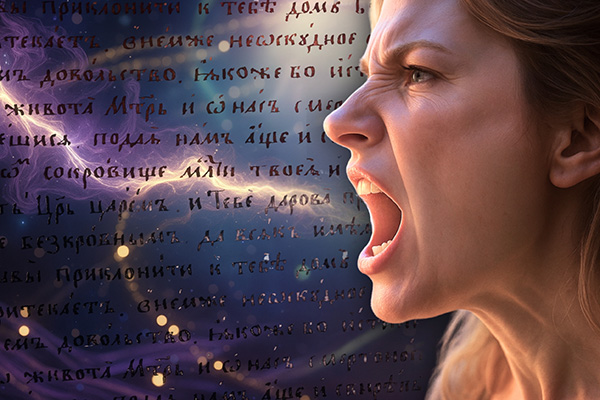How to Discover Enduring Genuine Affection
 Are you yearning for genuine love? The type of affection that endures a lifetime? A bond that resonates deeply with your spirit and fosters your growth, aspirations, and daily life?
Are you yearning for genuine love? The type of affection that endures a lifetime? A bond that resonates deeply with your spirit and fosters your growth, aspirations, and daily life?
You are not alone in your quest. Countless individuals embark on this path, searching for a partner who not only fills a void but also enhances the completeness they are already nurturing within themselves.
Too often, individuals compromise. I witness this frequently in psychic readings. They opt for what is convenient or familiar instead of what is genuinely right. There appears to be a quiet epidemic of settling for less, choosing relationships from a place of fear or loneliness rather than spiritual alignment.
I find that one of the primary hurdles many encounter is believing they are worthy and deserving of true joy.
Consider this: Did I intentionally select the person I am with, or did I agree because they expressed interest? Did I envision a future, or did I merely wish to avoid solitude?
Another concern that arises in readings is people hastily entering relationships without pondering the deeper questions. Have I moved on from my past? Am I ready to embrace authentic love? Do I truly understand what I desire?
Attracting a love that is sincere and lasting demands both inner reflection and intention. It’s not something that simply comes to you. It is a collaborative process involving your human ego, your higher self, and the universe.
Love, similar to all experiences in life, should be a journey, an adventure, and like most adventures, you often don’t realize you’re in one until you’re fully engaged ~ E.A. Bucchianeri
Step one involves deep reflection on your own life. Pause and inquire: What kind of existence am I crafting, and who would genuinely enrich that journey? Are you ready to invite someone who resonates with your energy and respects your path? Or are you still clinging to past hurts, outdated notions, or fears of being fully seen?
Self-honesty is a powerful starting point. When you are open and clear, you communicate to the universe that you are prepared to attract the kind of love that matches your highest interest.
In this journey towards love, personal transformation is unavoidable. You may reveal parts of yourself that need nurturing or healing. You might uncover hidden longings or recognize that your needs have evolved. That is not only acceptable, it is vital.
Give yourself full allowance to grow. True love initiates from within, and when you honor your necessities, your boundaries, your value, and your higher self, you naturally draw in someone who does the same.
The true key to discovering genuine and lasting love often lies in returning to the sacred practice of dating as a discovery. When someone invites you into a connection, view it as an opportunity to sense their energy. Do you feel uplifted in their presence? Do your values align? Can you communicate with authenticity and ease?
If you perceive red flags or a lack of chemistry, heed your intuition. You have every right to step away. In fact, doing so creates space for something greater to come into your life. Don’t remain out of guilt or habit. Stay only when it resonates as true.
Keep in mind, individuals seldom change unless they are genuinely committed to doing so. You must possess the strength to prioritize yourself first. That is not selfish. It is sacred self-respect.
To manifest enduring love, clarity is essential. Create a list of what you earnestly seek in a partner. What are your non-negotiables? What traits uplift and inspire you? Use this list not as a rigid criterion, but as a guide to navigate your heart. Dating transforms into a form of spiritual discernment, helping you identify who complements your life and who does not.
Understand this: You are deserving of a love that feels like home and ignites your spirit. It is not just achievable. It is your divine right. But it necessitates you to put in the effort, to let go of what is misaligned, and to trust that the love you seek is also in search of you.
The essence of love is to allow those we care about to be entirely themselves, not to mold them to fit our expectations. Otherwise, we love only the reflection of ourselves that we perceive in them ~ Thomas Merton
Strategies To Enhance Your Chances For Love
Heal Before You Seek: Allow time to let go of past heartbreaks and limiting beliefs before embarking on a new relationship.
Define Your Vision: Document what you genuinely want in a partner and why those traits are significant to you.
Embrace Your Authentic Self: Be unapologetically yourself. The right individual will cherish you for your true essence.
Enhance Your Intuition: Rely on your inner guidance regarding red flags or emotional connections.
Practice Daily Self-Love: Treat yourself as you wish to be treated in a relationship. This establishes the standard for how others engage with you.
Utilize Affirmations and Visualization: Speak affirming truths about your worth and imagine the relationship you are inviting into your life.
Be Ready To Walk Away: Never compromise. If someone does not fulfill your core needs or values, it is acceptable to let them go.
Remain Open Yet Selective: Stay receptive to love appearing in unexpected formats, but stay firm in your standards.
Make Room for Love: Create emotional, physical, and spiritual space in your life for a partner to step in.
Believe In Your Worthiness: At your essence, recognize that you are entitled to enduring, soul-deep love. Let that belief steer every decision.
You are never too late, too damaged, or too challenging to love. You are on a sacred journey, and the love you are in search of is also on its way to you. Trust the process. Trust in yourself. And always remember that you are love, and you are loved.
|
Venus resides in Arizona and has assisted clients using her extensive range of psychic gifts for over two decades. She possesses Clairvoyance, Clairaudience, Clairsentience, and Empathic abilities, and is also a certified Life Coach and Reiki practitioner. Departed loved ones often enter a reading—either by invitation or spontaneously—to convey their messages. Insights also come through her communication with Spirit and Angels, offering the client the guidance they require to move forward toward happiness, rewards, and success in their lives. Aside from being a psychic, life coach, and reiki practitioner, she has also taught for the past decade, leading seminars to help others embrace their higher insights. If you seek a compassionate psychic who can immediately tune-in and channel without tools, you will want a reading with Venus at: PsychicAccess.com. |
Finding enduring true love is a desire shared by many, but it can frequently feel like a distant dream. In a society where dating apps and casual liaisons dominate, it can be challenging to figure out where to begin when pursuing a meaningful and lasting connection. However, with the correct mindset and strategy, discovering genuine love is achievable. Here are several suggestions on how to discover lasting true love:
1. Know yourself: Before seeking true love with another, it’s crucial to know and cherish yourself first. Take time to contemplate your values, beliefs, and what you seek in a partner. Self-awareness will assist you in attracting the right person who resonates with your values and aspirations.
2. Be open to new experiences: True love may emerge when you least anticipate it, so be receptive to fresh experiences and opportunities. Step outside your comfort zone and explore new activities, whether it’s a new hobby or attending social gatherings. You never know who you may encounter along the path.
3. Don’t settle: It can be easy to compromise with someone who is not quite right due to a fear of solitude. However, settling for less than you deserve will ultimately lead to dissatisfaction. Hold out for someone who truly brings you joy and meets your needs.
4. Communicate openly and honestly: Effective communication is vital in any relationship, so be forthright with your partner about your feelings and requirements. This will foster trust and deepen your connection with each other.
5. Take it slow: True love requires time to flourish, so avoid rushing into a relationship or placing pressure on yourself to find “the one” immediately. Invest time in getting to know your partner and establishing a solid foundation built on trust and respect.
6. Be patient: The quest for true love is a journey that demands patience and perseverance. Don’t be disheartened if you haven’t yet found the right partner—true love is worth waiting for.
7. Trust your instincts: If something feels off in a relationship, heed your instincts and do not disregard warning signs. True love should evoke feelings of happiness, security, and appreciation, so do not accept anything less.
In summary, discovering lasting true love is feasible with the proper mindset and approach. By knowing yourself, embracing new opportunities, communicating openly and honestly, taking your time, practicing patience, and trusting your instincts, you can forge a meaningful and enduring bond with someone who genuinely brings you happiness. Remember, true love is worth waiting for, so do not settle for anything less. Continue reading













